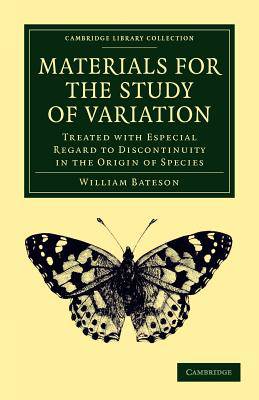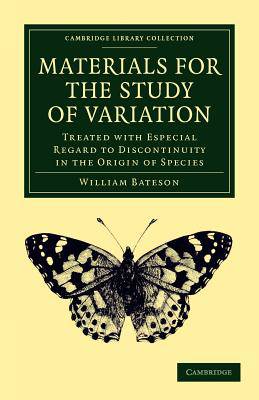
- Afhalen na 1 uur in een winkel met voorraad
- Gratis thuislevering in België vanaf € 30
- Ruim aanbod met 7 miljoen producten
- Afhalen na 1 uur in een winkel met voorraad
- Gratis thuislevering in België vanaf € 30
- Ruim aanbod met 7 miljoen producten
Zoeken
Materials for the Study of Variation
Treated with Especial Regard to Discontinuity in the Origin of Species
William Bateson
€ 120,95
+ 241 punten
Uitvoering
Omschrijving
Building on the work of Darwin and Mendel, the biologist William Bateson (1861-1926) was the first scientist to combine the study of variation, heredity and evolution, and to use the term 'genetics'. This book was first published in 1894 after many years of experimental and theoretical work - particularly in the embryology of the acorn worm genus Balanoglossus - which had been guided by the principle that embryonic developmental stages replay the evolutionary transitions of adult forms of an organism's ancestors. Bateson was the first to challenge this theory, which made him unpopular among the scientific establishment of the time, but he was proved right. Organising his material by anatomical sections, Bateson explores speciation, phylogeny and discontinuous and continuous variation among a wide range of species, including vertebrates, invertebrates and plants. This pioneering work offers great insight into how the study of genetics and inheritance itself evolved.
Specificaties
Betrokkenen
- Auteur(s):
- Uitgeverij:
Inhoud
- Aantal bladzijden:
- 620
- Taal:
- Engels
- Reeks:
Eigenschappen
- Productcode (EAN):
- 9781108053129
- Verschijningsdatum:
- 9/08/2012
- Uitvoering:
- Paperback
- Formaat:
- Trade paperback (VS)
- Afmetingen:
- 140 mm x 216 mm
- Gewicht:
- 775 g

Alleen bij Standaard Boekhandel
+ 241 punten op je klantenkaart van Standaard Boekhandel
Beoordelingen
We publiceren alleen reviews die voldoen aan de voorwaarden voor reviews. Bekijk onze voorwaarden voor reviews.











